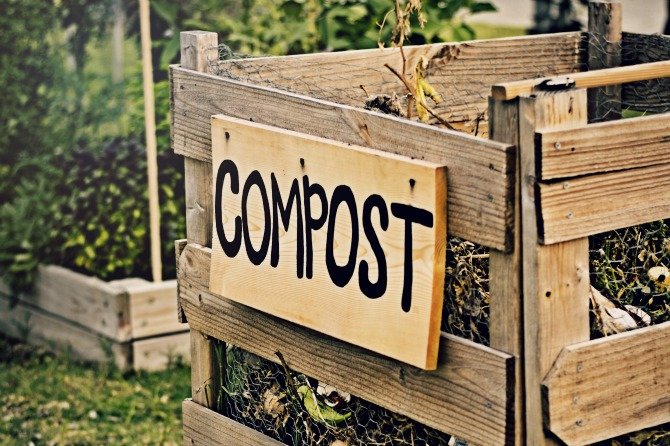Create A Compost Pile: A Do-It-Yourself Guide to Spring Composting

For quite a while lifestyle choices were more about convenience — how fast can a meal be put on a table, or how much of something can be purchased in order to save a few dollars. It was the ‘more’ mentality. Current trends are championing quality over quantity; one example is knowing where food comes from.
The times are changing, and whether your personal lifestyle choices already include elements of sustainable living or not, there are simple choices we can all implement into our daily routines.
Locally, there are several companies that will recycle yard waste and commercial food waste, turning the materials into organic compost. What if you want to make your own compost? Taking those table scraps, grass clippings, and leaves, and turning them into your own organic fertilizer? It’s easier than you think, and there’s a number of ways to do so.
The Do-It-Yourself Approach to Compost
 You must first select whether to create an open-air, or a closed-air compost system. Simply put—you are either going to create a heap of matter without a top, or a pile of debris within a container with a lid. Professionals could argue the merits of both, but for the simple at-home do-it-yourselfer, you really need to consider what works best for your needs and property.
You must first select whether to create an open-air, or a closed-air compost system. Simply put—you are either going to create a heap of matter without a top, or a pile of debris within a container with a lid. Professionals could argue the merits of both, but for the simple at-home do-it-yourselfer, you really need to consider what works best for your needs and property.
Consider if you have animals that would be attracted to the food scraps, whether domestic or wild. If so, a closed-air container system would be your best bet. This system would also be preferable if you live in a crowded area where the possible odor emitting from decomposing food in hot weather, or neighbors who don’t wish to see your “pile”, could pose a problem.
If you have a lot of property with substantial yard and food waste, an open-air system removed a distance from your house in a shady area, near a water source, would work well. Open-air systems can be made out of just about any scrap materials. Building a box similar to the one described in this article on raised beds would work well.
The easiest way to make a closed-air system would be to use an old (or new) garbage can with a lid. You will need to make holes in the can with a drill in order for air to circulate—oxygen is essential to the composting process (make at least 20 holes down the side and in the lid.)
The Materials
You need a mixture of ingredients that bring both nitrogen and carbon to the compost.
Nitrogen/green ingredients (think wet materials), include:
- Fresh grass clippings
- Vegetable waste
- Breads, pastas and other grains like rice
- Eggshells
- Tea bags
- Fruit skins
- Coffee grinds
Carbon/brown ingredients Include:
- Dry leaves
- Dry grass clippings
- Dry pine needles
- Pinecones
- Branches (cut up—the smaller the pieces, the faster the composting process)
Tips
- Try to make your pile 50% green and 50% brown ingredients. Nitrogen speeds up the process—if you are looking for faster results, add more green ingredients, but watch the overall moisture content.
- Stir your materials. If using the trash can method and the lid is secure, you can actually roll the can around to move the materials. A pitchfork or hoe works well for open-air containers.
- You can also add paper products to the pile as brown ingredients, and manure for green ingredients. Make sure the manure is from animals that are herbivores.
- Do not put meats, dairy products, bones, rocks, or any synthetic materials in your compost pile.
- Refrain from adding diseased plants or those infested with bugs.
- To cut down on odors and keep flies and animals away. Place all food scraps in the center of the pile and cover with the dry materials.
- A pile with too much moisture will rot. Add more dry ingredients and mix thoroughly following substantial rains or if too many wet ingredients were added to the ratio. A pile with too little moisture won’t properly decompose. Add water to a too-dry pile to assist the process.
How To Tell When Your Pile is Ready
The compost will be completely broken down and not resemble its former composition. It will smell earthy, like soil, be at least a dark brown color—generally the darker the soil, the more nutrients it contains, and be soft and able to fall out of your hand rather than clump together. Generally speaking, most experts say you will have suitable compost in 1 – 12 months. Your mixture of materials, the weather conditions, and time of year all play a part in compost decomposition.
